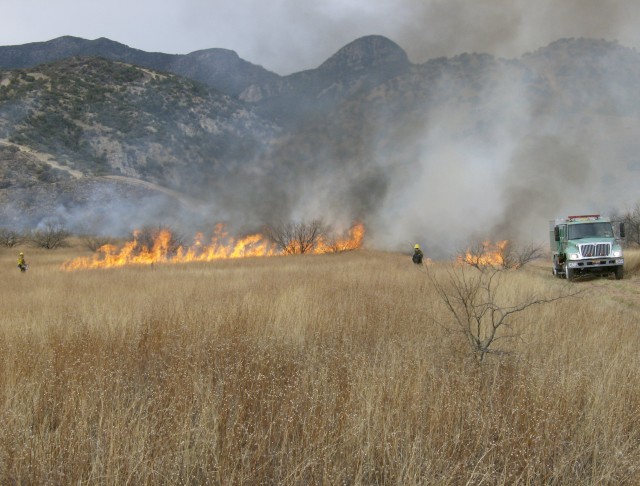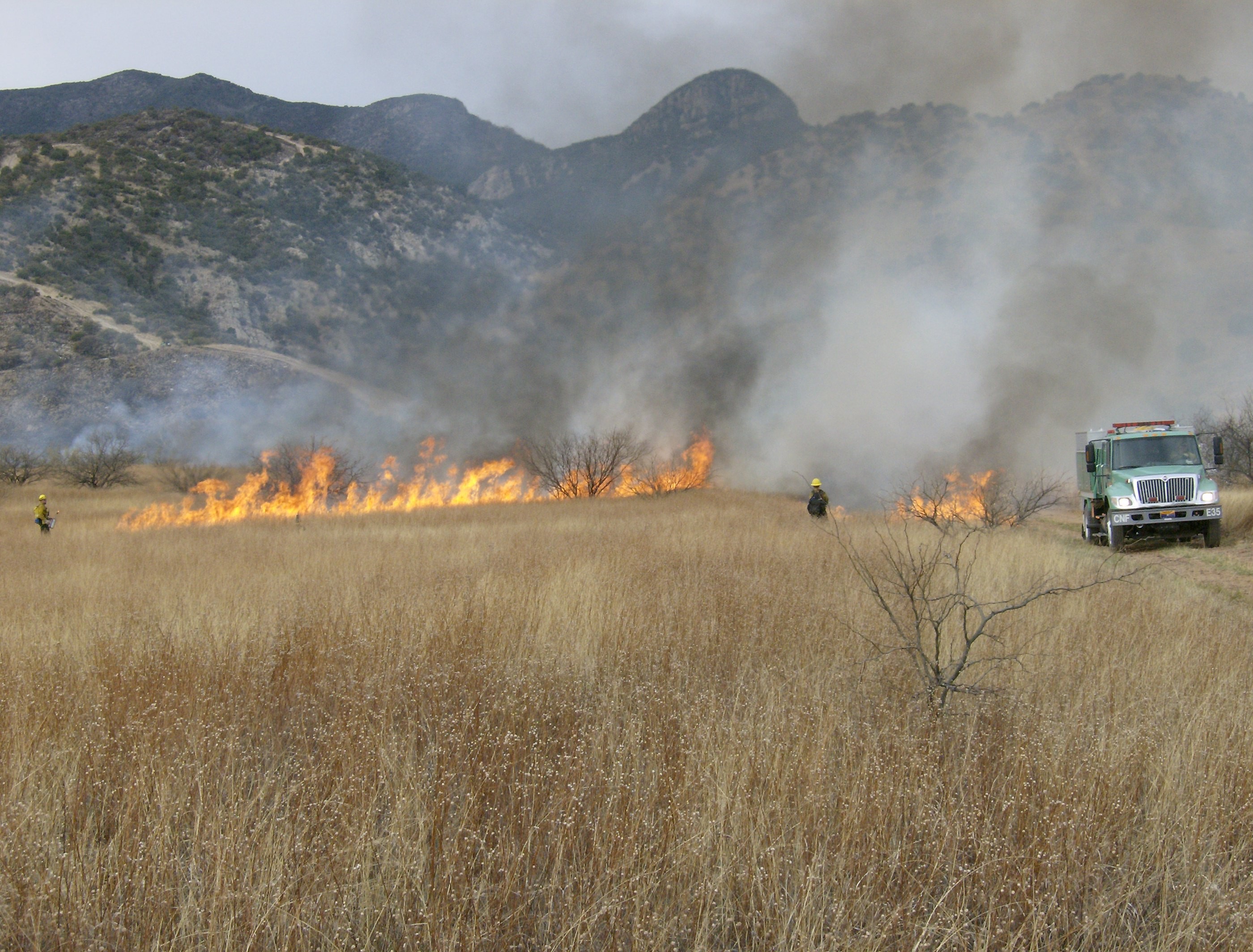FORT HUACHUCA, Ariz. -- Wildfires in Southeast Arizona, though dreaded, are inevitable. It's not a matter of "if," but "when'" While fires on Fort Huachuca can occur throughout the year, the highest fire danger normally occurs in May and June.
This year is no exception; in fact the fire danger looks to be exceptionally high this year.
While there is a lot of useful information available to fire staff in calculating the upcoming fire season, the basic fire potential can be summarized by a Fire Triangle. This conceptual triangle has three legs: fuel, weather and topography.
Fuels are drying out
Fort Huachuca had a wet monsoon last year which supported extensive grass growth. Grasses, a highly volatile fuel source, can greatly contribute to fire spread and the ignition of surrounding heavier fuels such as brush, and trees.
A look around Fort Huachuca reveals great expanses of brown, dried grass. In addition, the heavier fuels such as shrubs and trees are drying and increasing their combustibility ahead of their usual drying period.
Temperatures rising, humidity lessening
Southeastern Arizona's last rains of consequence were late last year, and the chance of any significant rain before the normal monsoon season in July appears slim. Humidity is on its way down, temperatures are creeping up, the days are lengthening, and strong winds are common during this time of the year. All of these contribute to bad fire weather.
Fort topography can conduct fires
Fort Huachuca's landscape on the fort is variable, with lower, flatter areas transitioning into the foothills which lead to the higher elevations in the Huachuca Mountains.
In addition, there are a number of canyons on the installation that will channel fire quickly into the higher elevations, where the fire intensity can greatly increase. The geography of the fort is such that there is high potential for a small fire under this season's conditions to develop into a much larger conflagration.
With the exception of managing fuels through thinning trees and mastication of shrubby growth, there isn't much people can do about the three legs of the fire triangle, except "ignition." No matter how bad the fire potential might be, without an ignition source there won't be a fire.
People can't control one of the main ignition sources, lightning, but everyone can work at preventing human-caused fires.
This is the time of the year, and especially this year, to be extra careful in every situation, both work or play. Obvious ignition sources include unattended campfires, firecrackers, smoking, and faulty mufflers. Less obvious ignition sources include sparks from welding, a vehicle with a hot muffler or catalytic converter parked in grass, a spark from a live fire round ricocheting off rocks, and motors with faulty or missing espark arrestors.
Starting now, everyone should consider their surrounding when planning activities on or off post, postponing projects or other things that could cause potential ignition until fire danger decreases. By doing so, people can prevent resource and structural damage, and disruption of the Army mission.
Those who see smoke or potential evidence of a wildfire with no evidence of fire control efforts should report it by calling 911 immediately. Don't assume others have already reported it.
(Editor's note: Weather permitting, the Fort Huachuca Fire Department will conduct a series of prescribed burns over the next several weeks in Areas R, L, W, H and Brainard/Squire Roads to reduce fuel loads that could lead to the potential for serious fires later. An article in next week's "Scout" will describe fire and its natural role in the ecosystem and the reason fire management personnel monitor, rather than suppress, some wildfires. It will also explain the need for prescribed fires and conditions under which they are conducted.)


Social Sharing